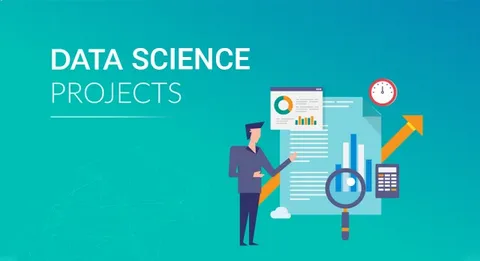In today’s data-driven world, working collaboratively and consistently is paramount for data scientists. However, as projects grow in size and complexity, they often become messy and difficult to replicate, even for the original developers. This is where the concept of reproducibility becomes vital. Reproducibility in data science refers to the ability to duplicate the results of a project using the same data and code. It ensures that work can be understood, audited, and built upon by others or you in the future. Whether you are a student enrolled in a Data Science Course or a professional working on enterprise projects, mastering reproducibility is a crucial step toward delivering high-quality work that stands the test of time.
What is a Reproducible Data Science Project?
A reproducible data science project allows another data scientist (or future you) to recreate the same results using the exact workflow. This includes accessing the same datasets, following the code logic, maintaining proper documentation, and using consistent software environments. Reproducibility improves transparency, enables collaboration, enhances trust in results, and accelerates innovation.
Why Reproducibility Matters?
- Collaboration: When multiple team members work on a project, reproducibility ensures everyone is aligned. Clean, documented, and modular code helps teammates understand what has been done and why.
- Auditability: In industries such as healthcare, finance, and education, data science projects must adhere to strict compliance standards. Reproducing analyses helps in passing audits and regulatory checks.
- Scalability: Reproducible projects are easier to scale and modify. They can be repurposed for other use cases or integrated into production pipelines with minimal overhead.
- Knowledge Retention: In cases where team members leave the organisation or shift roles, reproducibility ensures their knowledge doesn’t go with them.
Key Components of a Reproducible Data Science Project
To build reproducible data science projects, you must integrate several best practices into your workflow:
- Structured Project Directory
A clear directory structure helps users and collaborators locate files easily. A commonly used structure includes:
project_name/
│
├── data/
│ ├── raw/
│ └── processed/
│
├── notebooks/
│
├── src/
│ └── data_preprocessing.py
│ └── model_training.py
│
├── reports/
│ └── figures/
│
├── requirements.txt
├── README.md
└── config.yaml
This separation of raw, processed, source code, and documentation adds clarity and reduces errors.
- Version Control
Using Git for version control allows teams to track code changes, collaborate efficiently, and revert to earlier stages when necessary. Platforms like GitHub or GitLab enhance project transparency and offer cloud-based backup.
- Environmental Management
Ensuring consistent environments is key. Tools like virtualenv, conda, or Docker allow developers to specify and replicate the computing environment needed to run the project. Including a requirements.txt or environment.yml file makes it easy for others to install the same packages and dependencies.
- Automated Pipelines
Instead of manually running scripts in sequence, use workflow tools such as Make, Snakemake, Airflow, or Luigi. These tools define workflows as pipelines, making them easy to reproduce, debug, and share.
- Data Provenance
Always document the source of your data, the steps taken to clean and process it, and any assumptions made. Including data dictionaries or metadata files can help collaborators better understand the dataset.
- Modular and Documented Code
Break down your code into small, reusable functions or modules. Include comments and docstrings to explain what each part does. Well-documented code saves time and ensures continuity.
- Notebooks with Purpose
While Jupyter notebooks are popular for exploration, avoid making them the core of your workflow. They’re great for visualisation and storytelling, but they should link to modular scripts rather than contain all data processing and model training code.
Tools to Enhance Reproducibility
Here are some tools commonly used to improve reproducibility in data science:
- Jupyter Notebook Extensions – Tools like nbdime to diff notebooks and papermill to parameterise and execute notebooks.
- MLflow – Tracks experiments, parameters, and outputs for machine learning workflows.
- DVC (Data Version Control) – Version control system for datasets and models.
- Docker – Containerises your environment to ensure consistent deployment.
- Weights & Biases – For experiment tracking, visualisation, and collaboration.
Common Pitfalls and How to Avoid Them
- Hardcoding File Paths: Use relative or config files instead of absolute paths.
- Not Saving Random Seeds: Always set seeds in random functions to ensure the same outputs.
- Ignoring Dependency Management: Document every library and the version used.
- Neglecting Documentation: A README file with setup instructions and project overview goes a long way.
Reproducibility as a Learning Habit
Building reproducible projects isn’t just about professionalism—it’s a mindset that instils discipline and fosters continuous learning. Whether you are cleaning data, building predictive models, or visualising results, a reproducible approach makes every step more intentional and reflective.
For beginners, starting with reproducibility can feel overwhelming. The key is to start small: structure your directories, document your steps, and use Git from day one. Over time, these practices will become second nature and significantly enhance your performance and reputation as a data professional.
Final Thoughts
Reproducibility in data science is not optional—it is foundational. It transforms a pile of code and spreadsheets into a coherent, valuable asset that can be understood, trusted, and extended. In team environments, it promotes harmony; in professional settings, it ensures compliance and audit readiness. For solo learners and professionals, it brings clarity and confidence.
If you aim to become a competent data scientist capable of building robust and scalable solutions, focusing on reproducibility is a great place to start. And if you’re looking to master these skills in a structured way, enrolling in a data scientist course in Hyderabad can provide you with the technical foundation and practical exposure needed to thrive in this field.
ExcelR – Data Science, Data Analytics and Business Analyst Course Training in Hyderabad
Address: Cyber Towers, PHASE-2, 5th Floor, Quadrant-2, HITEC City, Hyderabad, Telangana 500081
Phone: 096321 56744


